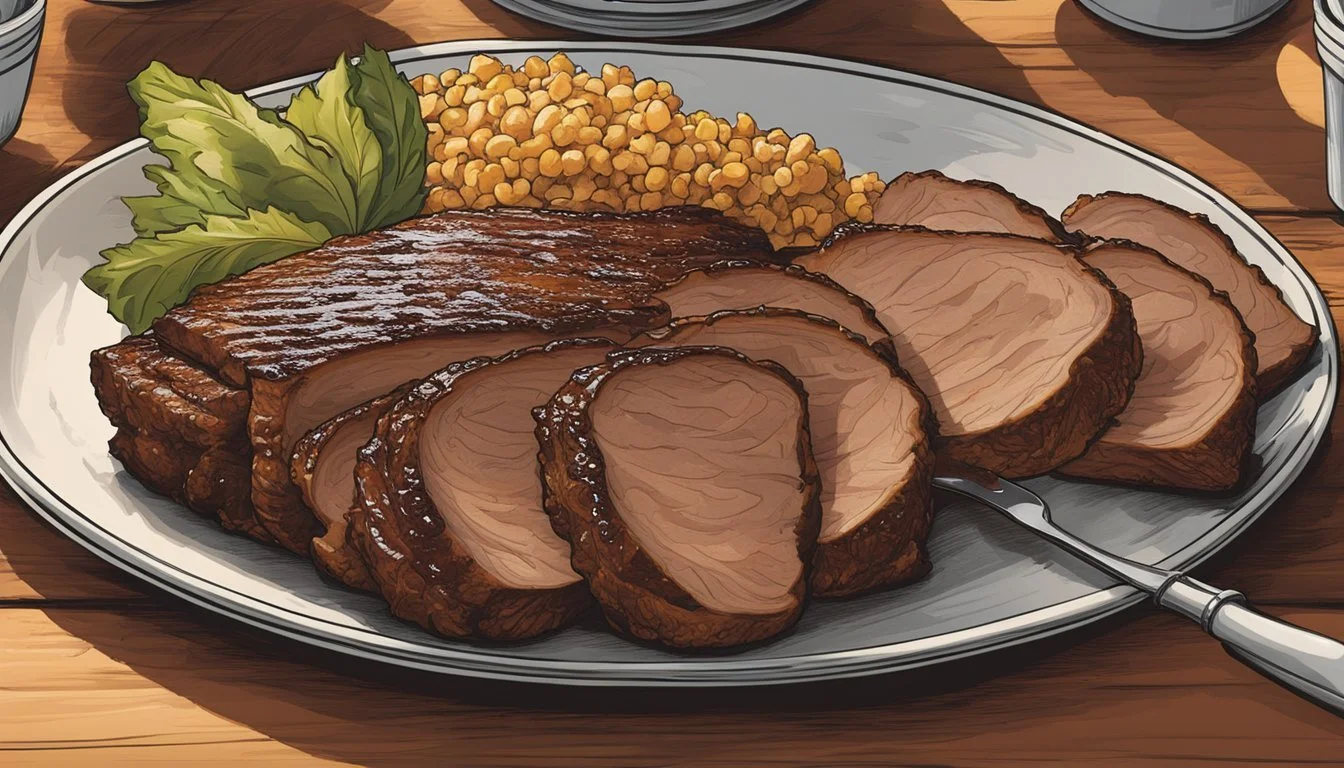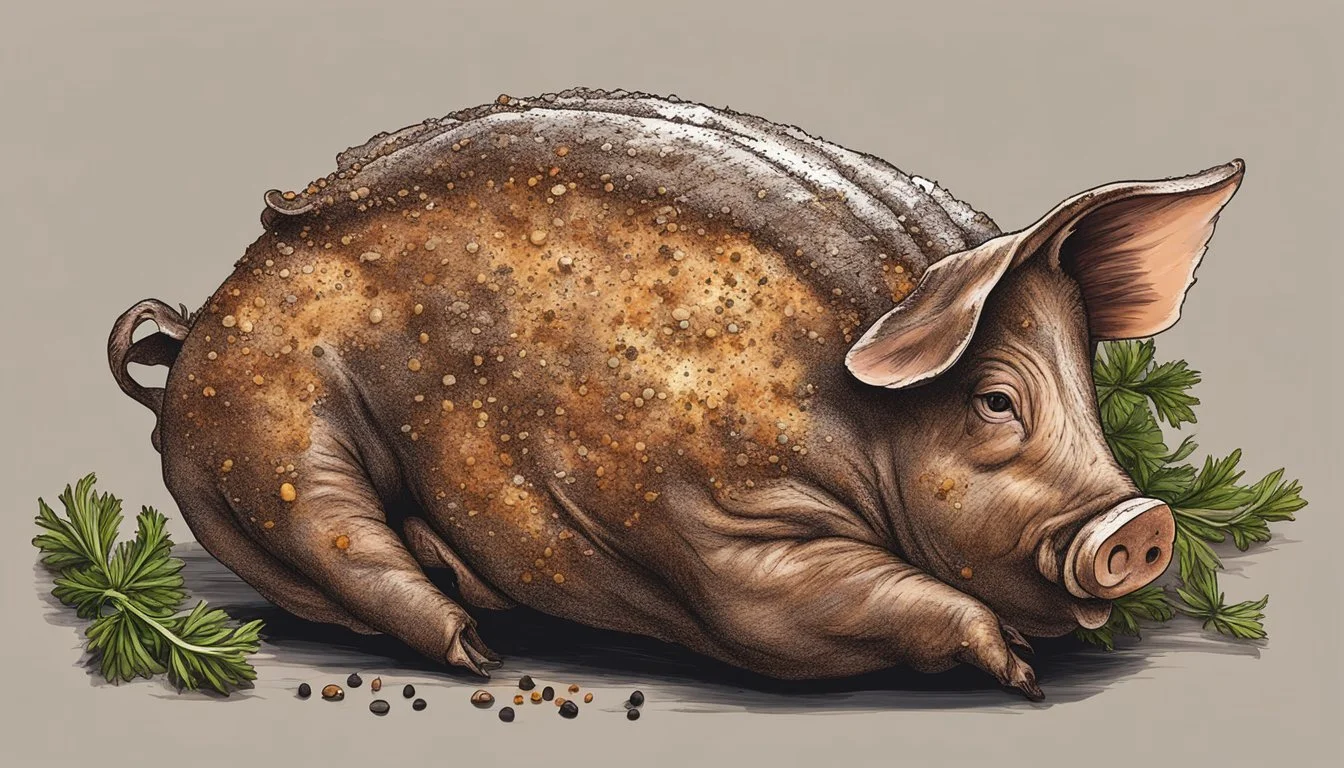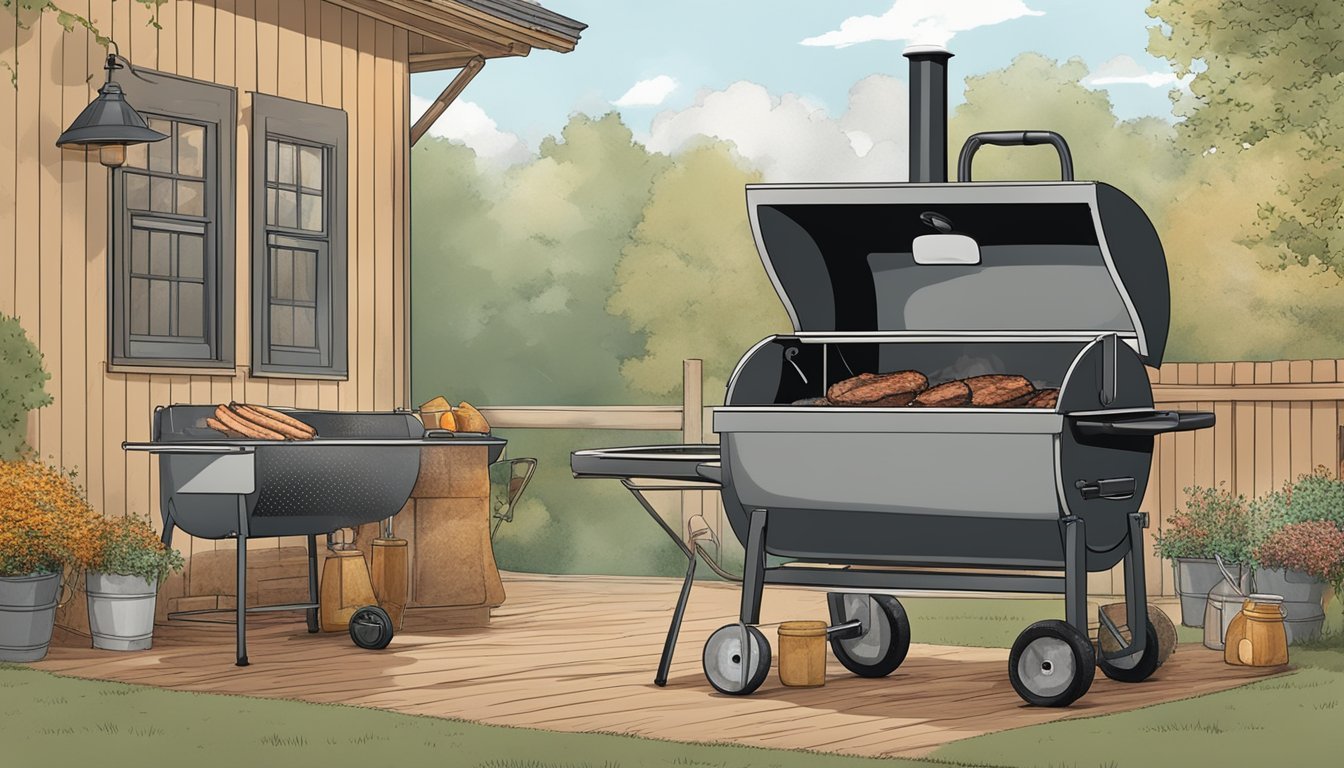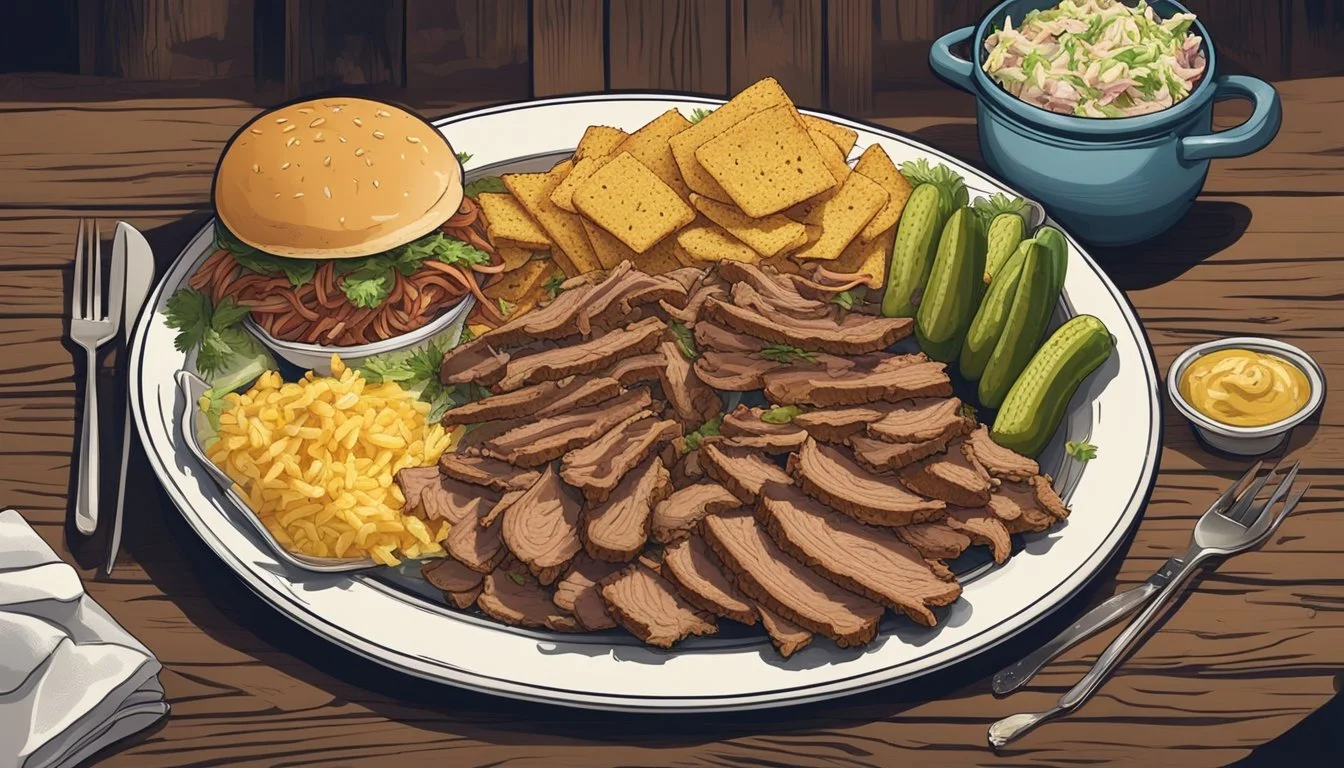How to Make Texas-Style Pulled Pork
Your Ultimate Guide to Authentic Flavors
Texas-style pulled pork epitomizes the art of slow cooking, transforming a hefty pork shoulder into a tender, flavor-packed delight. The process is rooted in the tradition of smoking meats, a practice integral to Texas barbecue. This approach requires patience and attention to detail, but the reward is a smoky, succulent meat that effortlessly pulls apart, courtesy of the careful cooking process that allows the muscle fibers to break down over several hours.
In crafting authentic Texas-style pulled pork, chefs begin by preparing the meat with a simple yet robust rub, often consisting of salt, pepper, and other spices that complement the pork's natural flavor. A thin layer of mustard can act as a binder, ensuring the rub adheres to every surface. The meat is typically smoked using a wood that imparts a subtle flavor complexity, such as post oak, emblematic of the region. As the pork slowly cooks, the fat renders, and the collagen softens, resulting in a texture that's both moist and easy to shred.
The significance of Texas-style pulled pork lies not just in its bold flavor profile but also in its versatility. It can be the star of a sandwich, topped with coleslaw, or serve as the centerpiece of a traditional barbecue (What wine goes well with barbecue?) spread. Precision in both preparation and cooking is paramount, as is allowing the meat to rest, ensuring that each bite is imbued with the iconic smoky taste that Texas barbecue is celebrated for.
Understanding Texas-Style Pulled Pork
Texas-Style Pulled Pork stands as a testament to the state's rich BBQ culture, known for its robust, smoky flavors (What wine goes well with smoky flavors?) and specific preparation techniques deeply rooted in tradition.
Historical Background
In the heartland of the Lone Star State, Central Texas has cultivated a BBQ style that is both an art and a science, passed down through generations. The historical background of Texas BBQ is a melting pot of influences, including German and Czech settlers, who brought their meat-smoking techniques to Texas in the 19th century. These methods evolved uniquely within Texas, giving rise to the distinct Central Texas BBQ style that celebrates the purity of smoked meat, highlighted prominently in their approach to pulled pork.
Key Characteristics
Texas-Style Pulled Pork is distinguished by the following features:
Meat: A primary cut of pork shoulder or Boston butt is favored for its marbling and tenderness.
Flavor: The hallmark of this style is the smoky flavor imparted by slow cooking over wood, particularly post oak, which is abundant in Central Texas.
Rub: A simple yet potent rub, typically consisting of equal parts salt and coarse black pepper (often referred to as "Dalmatian rub"), coats the meat.
Smoke: The meat is smoked at a consistent low temperature, traditionally between 225℉ and 300℉, contributing to a tender, fall-apart texture.
These key characteristics are not just cooking techniques, but a reflection of the regional identity that Texas BBQ prides itself on.
Essential Ingredients and Equipment
Preparing authentic Texas-style pulled pork requires specific ingredients and equipment to achieve the right flavor and texture. This section outlines the prime cut of meat essential for the dish and the specific spices to create the signature rub.
Choosing the Right Cut
When making Texas-style pulled pork, the cut of choice is the pork butt, also known as Boston butt. It is advisable to select a bone-in pork butt with a substantial fat cap that will render down during cooking, providing moisture and flavor. Additionally, pork shoulder, which includes the pork butt, is rich in connective tissue that breaks down into gelatin, creating a tender finished product.
Spice Rub Ingredients
The spice rub is vital for the iconic Texas flavor profile. A traditional rub consists of a few key spices in specific ratios:
Salt: Typically, use kosher salt for its clean flavor and ability to cover the meat well.
Black Pepper: Freshly ground black pepper is a must for an authentic taste.
Paprika and Cayenne: These spices add color and a touch of heat without overwhelming the pork.
Garlic Powder: Adds a savory note.
Brown Sugar: It provides a mild sweetness that complements the natural flavor of the pork.
Spice Amount Kosher Salt 1/4 cup Black Pepper 1/4 cup Paprika 2 tablespoons Cayenne 1 teaspoon Garlic Powder 1 tablespoon Brown Sugar 1/2 cup
For the cooking process, you will need a reliable smoker or a pellet smoker capable of maintaining a steady temperature. Post oak wood is often preferred for its mild, smoky flavor, but oak, hickory, cherry, and maple are suitable alternatives. Essential equipment includes aluminum foil or butcher paper for wrapping the meat, a spray bottle for keeping it moist, and a meat thermometer or probe to ensure the meat is perfectly cooked.
Preparing the Pork
Proper preparation of the pork is critical to achieving the authentic Texas-style flavor and texture. This includes trimming excess fat, applying a well-balanced rub, and using a binder to ensure that the rub adheres well to the meat.
Trimming the Fat
Before seasoning, one must carefully trim the fat from the pork shoulder, leaving about a 1/4 inch layer. This assists in rendering the fat during cooking while keeping the meat moist. Scoring the remaining fat cap can also be beneficial, as it allows for better penetration of the spices.
Applying the Rub
A dry rub, typically composed of equal parts table salt and black pepper, is generously applied to all surfaces of the pork. The spices used in the rub are crucial to the final taste of the Texas-style pulled pork, infusing the meat with depth and complexity as it cooks.
Utilizing a Binder
To ensure that the rub adheres to the pork, a thin layer of yellow mustard is used as a binder. It not only helps the rub to stick but also adds a subtle tanginess without overpowering the overall flavor of the pork. The mustard layer should be applied before the dry rub.
By following these steps, the pork becomes well-prepared to undergo the slow cooking process that will make it tender and flavorful.
Cooking Process
In preparing Texas-style pulled pork, the cooking process is critical to achieving the perfect balance of flavor and tenderness. The process involves careful smoking of the pork, maintaining precise temperature and moisture, and employing techniques to handle the stall phase that often occurs when the internal temperature of the meat plateaus.
Smoking the Pork
One begins by preparing the pork shoulder, also known as Boston butt, by rubbing it with a 50/50 mixture of table salt and black pepper. Mustard may be used as a binder to help the dry rub adhere to the meat. The pork is then placed in the smoker fat side down to ensure even cooking and the formation of a desirable bark. The smoking process infuses the meat with a deep smoke flavor, which is a hallmark of Texas-style barbecue.
Managing Temperature and Moisture
The smoker should be maintained at a steady temperature range of 225℉ to 275℉. It's essential to keep the environment within the smoker moist to prevent the meat from drying out. One can introduce moisture by placing a tray filled with water, apple cider vinegar, or apple juice in the smoker, which will also add a subtle flavor accent to the pork.
The Stall and Wrapping Techniques
As the pork shoulder smokes, it may reach a point called the "stall," typically when the internal temperature is between 150℉ and 170℉. At this moment, it's common to wrap the meat in foil or butcher paper to lock in moisture and expedite the cooking process. Butcher paper is preferred by many pitmasters as it's porous, allowing the meat to breathe and develop a richer bark. The pork should continue cooking until it reaches an internal temperature of 195℉ to 203℉, which ensures the connective tissues have broken down completely, and the meat is perfectly tender for pulling.
Resting and Shredding
After thoroughly smoking the meat, the resting and shredding stages are crucial for ensuring the pork is perfectly tender and retains its juiciness.
Resting Time
The resting period is essential for Texas-Style Pulled Pork. Once removed from the heat source, the meat should be allowed to rest for approximately 15-20 minutes. This waiting period permits the juices to redistribute throughout the pork, enhancing the flavor and moisture retention. For best results, one may rest the meat in a cooler, which helps maintain an optimal temperature without further cooking the pork. Resting ensures that the meat remains juicy and at an ideal consistency for shredding.
Shredding Technique
Shredding the pork should be approached with care to maintain the meat's integrity. Utilizing two forks, chefs should carefully pull apart the meat, following the muscle fibers. This technique helps achieve that sought-after tender texture. One should shred the meat gently yet effectively, ensuring each piece is well-separated but still moist and succulent. Shredding properly ensures the pork's optimum texture and readiness for serving.
Serving and Accompaniments
Texas-style pulled pork is versatile in its serving options, pairing delightfully with various sides and sandwiches. One can enjoy it in its purest form or combine it with other dishes for an enhanced flavor experience.
Traditional Serving Styles
Texas pulled pork is often savored in a pulled pork sandwich. This traditional method involves:
Soft hamburger buns or Texas toast, lightly toasted to stand up to the juiciness of the pork.
A heaping serving of tender, smoked pulled pork.
A spoonful of coleslaw atop the pork, adding a crunchy, creamy contrast.
Besides sandwiches, Texas pulled pork can also be a star component in:
Nachos: Layered with cheese, beans, jalapeños, and a generous topping of pulled pork.
Pizza: Scattered over the top before baking, often paired with barbecue sauce and onions.
Sauce and Sides
The choice of sauce is integral to the flavor profile of Texas pulled pork:
Texas-style sauce: Typically a balanced mixture that's a bit spicy, a touch sweet, and a smoky complement to the meat.
Mustard-based sauce: A tangy alternative that's popular in certain Texas regions.
When considering what to serve with Texas pulled pork, these sides complete the meal:
Sides Description Coleslaw A crispy, tangy counterpart that cuts through the rich meat. Baked Beans A sweet and savory side that pairs well with smoky flavors. Potato Salad Creamy and starchy, a classic choice for barbecue. Cornbread Soft and slightly sweet, ideal for sopping up juices and sauces.
Whether served in a sandwich or alongside classic sides, Texas pulled pork is a dish with a variety of sumptuous serving options.
Alternate Cooking Methods
While the traditional method for making Texas-style pulled pork involves smoking the meat for several hours, one may not always have access to a smoker or the time to tend to it. The following alternate cooking methods offer a way to achieve similar results with different equipment.
Using a Slow Cooker
In a slow cooker, achieving that tender, fall-apart Texas-style pulled pork requires patience but very little effort. One begins by rubbing the pork shoulder with a dry spice mixture. Then, to infuse a touch of sweetness and maintain moisture, they might add apple cider or a similar liquid to the bottom of the cooker. The pork shoulder should cook on a low setting for 7-8 hours or on high for 4-5 hours, until the meat is perfectly tender and shreds easily with a fork.
Ingredients:
Pork shoulder
Dry rub (individually preferred spices)
Liquid (preferably apple cider for sweetness)
Directions:
Apply dry rub to the pork shoulder.
Place in slow cooker with a cup of apple cider.
Cover and cook on low for 7-8 hours or on high for 4-5 hours.
Oven Cooking Options
For those who prefer using their oven, it can be a great alternative to smoking or slow cooking. The food enthusiast preheats their oven to a low temperature, around 275°F (135°C), to mimic the gentle cooking process of smoking. They would then cook the seasoned pork shoulder, often wrapped in foil or covered in a dutch oven, for several hours. A common practice is to add a small amount of liquid—like apple cider to enhance the savory profiles of the pork and prevent it from drying out. The key to replicating that Texas-style smoked flavor is patience and a consistent low-and-slow cooking method.
Ingredients:
Pork shoulder
Dry rub
Liquid for moisture (apple cider recommended)
Directions:
Season pork shoulder with dry rub.
Place in a roasting pan with a bit of apple cider.
Cover with foil or a lid and bake at 275°F for an hour per pound of meat, approximately.
Tips for Perfect Pulled Pork
Making Texas-style pulled pork can elevate a backyard barbecue to new heights, combining centuries-old traditions with modern techniques. Patience and precision are key in achieving that perfect blend of smoky flavor and tenderness.
Tips for Beginners
For those just starting their journey into the world of Texas-style pulled pork, mastering a few basics is essential:
Meat Selection: Opt for a pork shoulder or Boston butt, as these cuts contain an ideal balance of meat and fat for flavor and succulence.
Fat Trimming: Trim the fat cap to about 1/4 inch thick to promote even cooking and better smoke penetration.
Dry Rub: Apply a generous amount of dry rub, a mix of spices crucial for authentic Central Texas flavor. Common ingredients include salt, black pepper, garlic powder, and paprika.
Before smoking, some pitmasters recommend applying a thin layer of mustard over the pork to help the rub adhere. When it's time to cook, maintaining a consistent smoker temperature of approximately 225-250°F is vital for low and slow cooking, the heart of Texas barbecue.
Advanced Techniques
Experienced BBQ enthusiasts often employ these strategies to further enhance the quality of their pulled pork:
Wood Selection: For the best Texas smoked pulled pork, use post oak wood, which imparts a smooth, distinctive smoke flavor.
Spritzing: To avoid drying out, periodically spritz the pork with a mixture of apple cider vinegar and water. It adds moisture and a subtle tang.
Temperature Management: They maintain a 'bark', or crispy exterior, while preventing overcooking, by carefully monitoring the internal temperature. Aim for an internal temperature of 195-205°F for optimal tenderness.
Remember that pulled pork requires a substantial cook time, often more than an hour per pound of meat, so planning is crucial. Additionally, allowing the meat to rest before shredding gives the juices time to redistribute, ensuring a moist and flavorful result. These techniques, when applied with attention to detail, can make the difference between good and exceptional Texas-style pulled pork.






